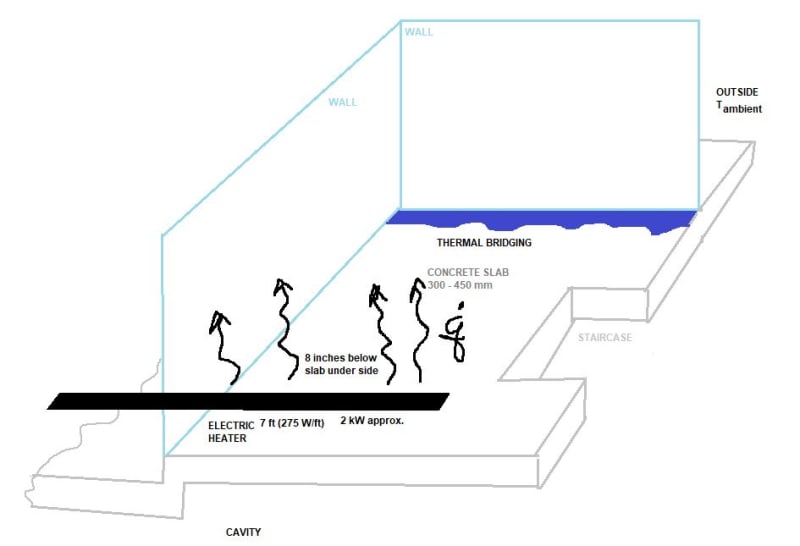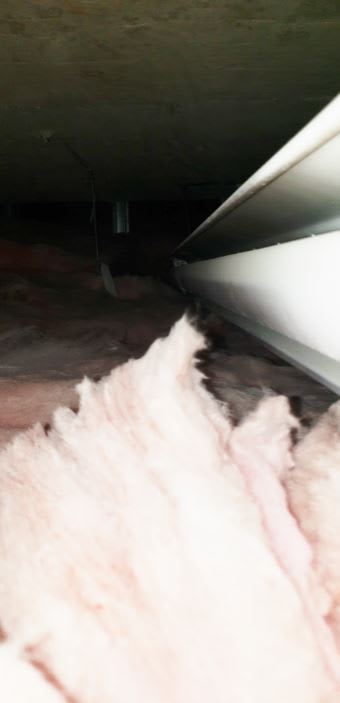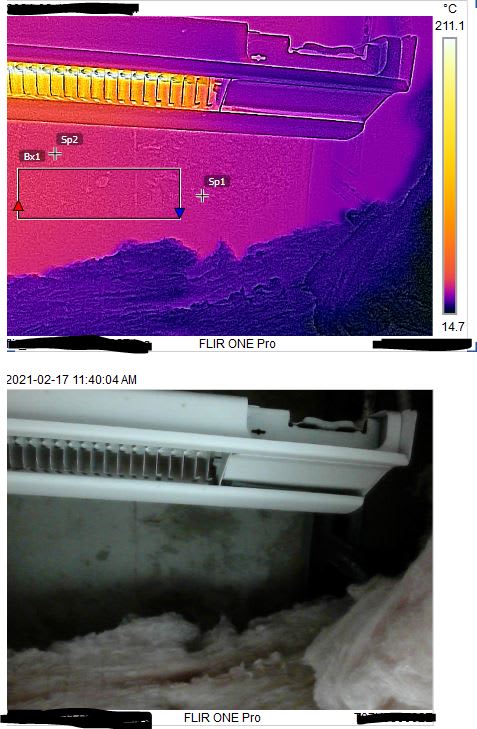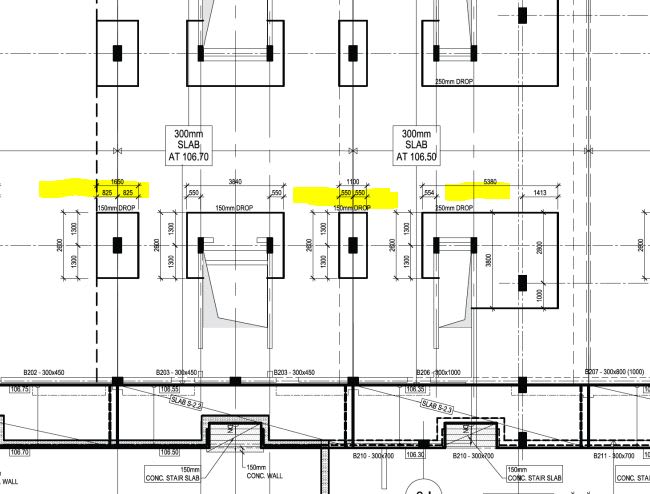disruptoergosum
Aerospace
- Jun 17, 2021
- 17
Looking for some guidance on how to best calculate the heat generated from an electric heater that is installed beneath a concrete slab.
It's 275 W/ft heater (7 ft long) 347 V, 5.76A electric baseboard heater that was installed beneath the slab (sits about 8 inches beneath it on some mounting brackets).
Slab geometry is a bit complex. Even a 1D estimate may be significantly off.

It's 275 W/ft heater (7 ft long) 347 V, 5.76A electric baseboard heater that was installed beneath the slab (sits about 8 inches beneath it on some mounting brackets).
Slab geometry is a bit complex. Even a 1D estimate may be significantly off.




